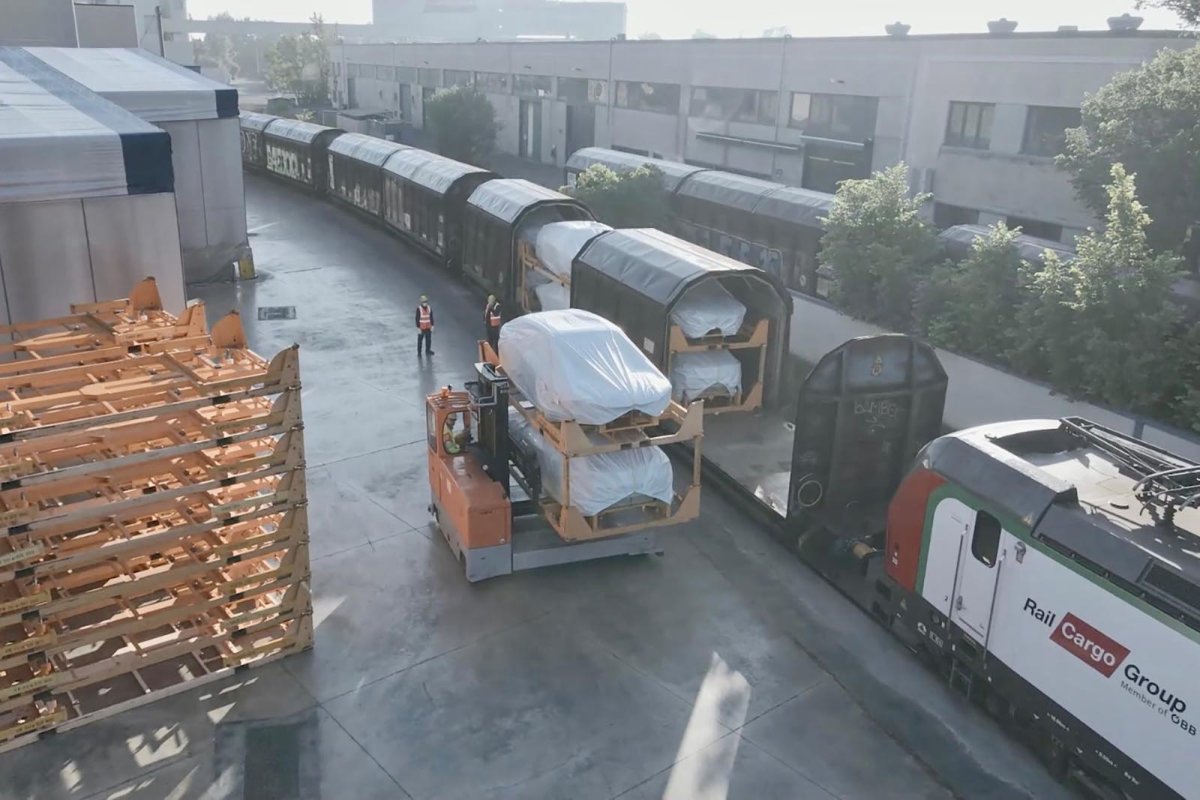Automakers around the world are trying to reduce their carbon footprints. While reduction is the first step, top-to-bottom product lifecycle carbon neutrality is the finish line.
Companies receive parts and materials from suppliers to build vehicles, and then when they are complete, the automakers send them out on ships, trains and trucks to customers.
Volvo, Lamborghini, GM and others are working on reducing postproduction emissions. Some automakers are switching modes of transportation; others are switching fuels. All are conscious of the amount of carbon entering the atmosphere because of their practices.
Volvo
Volvo's shipping partners have all switched to run on renewable fuels. The move will reduce fossil carbon dioxide (CO2) emissions from intercontinental ocean freight by 55,000 tons over a year. That is a reduction of at least 84 percent, the equivalent of a full-sized truck driving around the equator about 1,200 times.

The fuel used in the boats is called fatty acid methyl esters (FAME) and is based on renewable sources like waste cooking oil. Volvo says no feedstock related to palm oil or palm oil production is used.
Volvo says that if the fuel is not available for a specific shipment, the allocation is instead sent elsewhere, balancing the company's use. The methodology is audited regularly and is in accordance with the European Union's Renewable Energy Directive.
Volvo aims to reduce its lifecycle carbon footprint by 40 percent between 2018 and 2025.
Lamborghini
The Italian automaker moved all of its Urus SUV transportation to rail cars in 2021. With an agreement between Lamborghini and ÖBB Rail Cargo, Urus shells are now delivered from the Volkswagen facility in Zwickau, Germany, to Lamborghini headquarters in Sant'Agata Bolognese, Italy, via a sustainable route.
Instead of emitting 2,234 tons of CO2 per weekly journey, Urus transportation is now only responsible for 331 tons of CO2, a reduction of 85 percent.

ÖBB Rail Cargo also guarantees a total transit time of 48 hours—a record time for this type of transport, says Lamborghini. The automaker stipulates that wheeled transport will only take place on trucks using liquified natural gas (LNG) and will be from Modena, Italy, to the Sant'Agata Bolognese site, accounting for around 2 percent of the journey.
The company's decarbonization plan, called the Direzione Cor Tauri program, is targeting a 50 percent CO2 reduction by 2025.
General Motors
In October, General Motors announced that it had successfully sourced 100 percent of the renewable energy needed to power all of its U.S. manufacturing sites by the end of 2025, avoiding the production of approximately 1 million metric tons of carbon emissions that would have been produced between 2025 and 2030, which GM says equates to burning 1 billion pounds of coal.
Additionally, GM has a pledge in place with its truckload carriers to achieve carbon neutrality by 2038. Its ocean carriers are transitioning to utilizing LNG in their newly built vessels, which are coming online in the 2024-2025 calendar year.
Honda
Honda has a three-part plan to achieve carbon neutrality for its logistics operations by 2050. The first element is highly efficient transportation. That means the company asks its suppliers to deliver products to the nearest cross-dock, where Honda then combines the products within a multi-company consolidation to transport them most efficiently. This also reduces the time and mileage of the transportation of empty containers.
The second part is low-carbon transportation. Like Lamborghini, Honda has switched to rail travel, eschewing trucks. The utilization of a train route between Morioka, Japan, and Tokyo resulted in a reduction of 26.84 tons of carbon dioxide.
The final pillar is advancing packaging. Instead of using disposable outer cases for shipping parts, Honda and its suppliers use reusable cases. For the inner packaging, the company shaved weight from its cardboard and uses more returnable packing options.
"We are actively working to reduce CO2 emissions from the logistics and transportation of finished vehicles and parts, including the promotion of more fuel-efficient trucks and driving practices, optimizing shipping routes, working with U.S. EPA Smartway Transport-certified shipping partners and, where possible, introducing more fuel-efficient modes of transport, such as rail cars," Eric Walli, assistant vice president and the division manager of Regional Planning for American Honda Motor Co., Inc., told Newsweek.
"In fact, Honda even helped in the design of the tri-level Auto-Max railcars that can carry more vehicles in a single carload than other railcars, reducing the energy intensity of product shipments."

Nissan
Nissan is using heavy-duty battery-electric vehicles (BEVs) to deliver new vehicles from the Port of Los Angeles to dealerships in the Los Angeles region. Nissan is also using BEV trucks for inbound operations at plants across North America.
The automaker recently trialed its first BEV delivery of sea containers from the Port of Los Angeles to its Riverside, California, parts distribution center. It also collaborated with its logistics partners to install chargers to support the trucks.
Nissan says the proof-of-concept project will help the company understand more about the use of all-electric trucks for delivery. The next phase starts with four BEV car-hauler trucks, and Nissan plans to deploy additional trucks in the Los Angeles area. The company says it could eventually begin using BEV trucks for a variety of uses.
About the writer
Jake Lingeman is the Managing Editor for the Autos team at Newsweek. He has previously worked for Autoweek, The Detroit ... Read more
To read how Newsweek uses AI as a newsroom tool, Click here.





